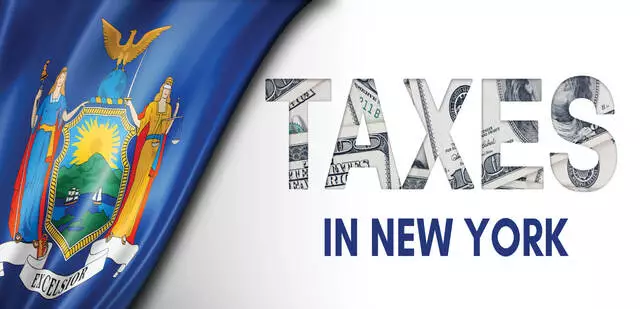
There are an order and two determinations this week for your thoughtful consideration. The order refers to 36 separately numbered allegations of error by the Division. And, because I am of a certain age and it is Thanksgiving season, this triggered a memory of “Alice’s Restaurant Massacree” by Arlo Guthrie. The song was notable for its 1960s anti-establishment narrative and wry humor. It also took up one whole side of an album. For the benefit of you kids out there, albums were round vinyl media for delivering permanently embedded audio content. Back in the day, most album sides had between five to seven songs making up roughly 22 minutes of audio. In the 1970s and 1980s, we dinosaurs would re-record both sides of an album onto the single side of a 90-minute cassette tape so we could have two albums’ worth of music on one tape to play in our cars since there was no easy way to play a vinyl album in a moving vehicle.
Anyway, having one whole side of an album devoted to a single pop song was unusual.
The song was about Arlo and his friend going to visit Alice at her restaurant for Thanksgiving, and then helping Alice by taking her garbage to the dump. Arlo was arrested after they dumped the garbage at the bottom of a cliff because the town dump was closed on Thanksgiving.
Anyway, here is the passage of the song that was triggered in my memory by the order’s reference to the 36 separately numbered allegations. The passage involves the post-arrest courtroom scene:
We walked in, sat down, Obie [ed.: the sheriff] came in with the twenty seven eight-by-ten
colour glossy pictures with circles and arrows and a paragraph on the back
of each one, sat down. Man came in said, "All rise." We all stood up,
and Obie stood up with the twenty seven eight-by-ten colour glossy
pictures, and the judge walked in sat down with a seeing eye dog, and he
sat down, we sat down. Obie looked at the seeing eye dog, and then at the
twenty seven eight-by-ten colour glossy pictures with circles and arrows
and a paragraph on the back of each one, and looked at the seeing eye dog.
And then at twenty seven eight-by-ten colour glossy pictures with circles
and arrows and a paragraph on the back of each one and began to cry,
'cause Obie came to the realization that it was a typical case of American
blind justice, and there wasn't nothing he could do about it, and the
judge wasn't going to look at the twenty seven eight-by-ten colour glossy
pictures with the circles and arrows and a paragraph on the back of each
one explaining what each one was to be used as evidence against us. And
we was fined $50 and had to pick up the garbage in the snow… .
If you have an extra twenty minutes and want a taste of authentic 1960s pop/folk culture, you can listen to the song on YouTube here.
This edition of TiNY also includes the editor’s brief and ill-advised foray into intellectual property law (see the footnote below) wherein I claim on behalf of my firm’s residency practice a common law trademark for the phrase: “We prove the move.” I have no idea if there is any such thing as a common law trademark or if my firm would even want to claim something as tacky as this. But, you know, just in case.
Order
Matter of Townhouse Builders Inc. (ALJ Luckina, October 31, 2024); Div’s Rep. Elizabeth Lyons, Esq.; Petitioner’s Rep. Herschel Friedman, CPA; Articles 28 and 29/Demand for a Bill of Particulars (Zoe Peppas).
Petitioner filed a petition at DTA in protest of a refund claim determination notice. The refund denial had argued Petitioner was not eligible for the refund and claimed additional information was needed. In response, Petitioner attached a statement to its petition with 36 separately numbered assertions of error made by the Division. The Division filed an Answer in response.
Petitioner then served the Division with a demand for a bill of particulars requesting the Division clarify statements made in the Division’s Answer, including information regarding the documents the Division considered in deciding to deny the claimed refund. The Division moved to vacate the demand, stating the demand sought “evidentiary material rather than an amplification of the Division’s answer, attorney work product, and particularization of issues upon which the Division does not bear the burden of proof.” Petitioner submitted an affidavit in opposition to the Division’s motion to vacate.
The use of a bill of particulars is to “prevent surprise at the hearing and to limit the scope of the proof.” Since it went well beyond that purpose, Petitioner’s demand was ruled by the ALJ to be overbroad. It sought evidentiary detail, questioned the Division’s legal interpretations, and sought particulars on issues for which the Division did not have the burden of proof.
On the other hand, the ALJ ruled that an Answer from the Division must fully and completely advise a petitioner of the Division’s defenses and if the Answer is too vague, the Division may be required to particularize its pleading. The Answer here was found by the Judge to lack some of the required specificity. It was unclear what documents were provided to and considered by Division when it denied the refund. And for Petitioner to be able to properly challenge the denial, it was crucial to clarify what documents were considered and why such documents were found to be insufficient or why additional documents were needed. The Judge found this fell squarely within the goal of a bill of particulars: “to prevent surprise at the hearing and to limit the scope of proof.”
The Division was accordingly directed to supply a bill of particulars to Petitioner in response to only two paragraphs of the Request that the Judge viewed as not being overbroad.
Determinations
Matter of Vora (ALJ Baldwin, October 31, 2024); Div’s Rep. Peter Ostwald, Esq.; Pet’s Rep. pro se (represented by spouse); Article 22/Allocation of severance income (Peter Calleri).
Petitioner appealed the partial denial of a claim for refund, arguing that a $111,681 lump sum severance payment was not taxable by New York as she received the payment while she was a nonresident of New York. Judge Baldwin disagreed and denied the petition.
Specifically, Petitioner worked for the Washington Market School (“WMS”) in New York for 11 years. In June of 2018, Petitioner took a sabbatical from WMS for personal reasons, and she and her husband moved to Hawaii. She was terminated by WMS in May 2019 and received severance payment in 2020, all while still living in Hawaii.
Petitioner filed a nonresident return for 2020 requesting a refund of $10,717 of taxes withheld by her employer. She allocated one workday to New York “simply because the tax software would not allow e-filing of their 2020 New York tax return with 0 days imputed.” She also explained that her W-2 showing New York wages was erroneous. DTA issued an account adjustment notice allowing a portion of the refund and issued a notice of disallowance disallowing $4,790.86 of the claim.
Judge Baldwin concluded that the severance payment was New York source income under Tax Law § 631(b)(1)(F) as “income received by [a] nonresident[] related to a business, trade, profession or occupation previously carried in this state […] including […] termination agreements.” Under the separation agreement, Petitioner received severance pay computed as a percentage of her salary. It also included a requirement that Petitioner release all claims against WMS “arising out of or in any way related to [her] employment with WMS or separation from employment with WMS.”
Petitioner argued that the severance payment was compensation for the loss of Petitioner’s “entire calendar school year potential employment elsewhere.” However, Judge Baldwin concluded that there was no indication that Petitioner’s former employment was not entirely carried on in New York. Accordingly, the severance payment was determined to be properly allocated to New York.
Matter of Hoff and Ocorr-Hoff (ALJ Russo, October 31, 2024); Div’s Rep. Peter Ostwald, Esq.; Pet’s Reps. Donald O’Brien, Jr., Esq. and Danielle Ridgely, Esq.; Art. 22/Domicile (Chris Doyle).
Petitioners filed a part-year resident return for 2018 claiming a move date of October 29, and a nonresident return for 2019. Prior to those years Petitioners were long-term residents of New York State. The case involved the issue of whether Petitioners executed a change of domicile entitling them to file as New York part-year residents in 2018 and as nonresidents in 2019.
The Judge determined that they did not.
The Judge noted that domicile is determined by “physical presence and intent,” and that the party alleging a change of domicile bears the burden of proving the change with clear and convincing evidence. And the Judge noted that intent is determined on the basis of objective facts supporting the conclusion that “the place of habitation is the permanent home of a person, with the range of sentiment, feeling and permanent association with it.”
Factually, the Judge concluded that Petitioners planned to make Florida their permanent home, but they did not manifest enough of a lifestyle change to demonstrate a clear and convincing change of domicile from New York to Florida.
Here are a few of the facts Judge Russo may have been relying on in making her determination:
- Petitioners bought the New York home making up their historic domicile in 2011 and bought the Florida home in 2014 with the intention to move to Florida once Mr. Hoff’s business obligations in New York were reduced. But a strategy to transition the business to Petitioners’ son did not go as planned, and it wasn’t until the business was sold in August 2021 that Mr. Hoff’s New York business duties were reduced significantly.
- Petitioners spent more time in New York (164 days) than in Florida (153.5 days) in 2019.
- Petitioners spent more time in New York (34 days) than Florida (18 days) in 2018 after the claimed move, and the New York days included Thanksgiving and Christmas.
- Some of Petitioners’ parents and adult children lived in New York while none of them lived in Florida.
- Petitioners maintained memberships at two New York country clubs following the claimed move.
Ultimately, the Judge found that although “petitioners intended to change their domicile to Florida at some point, their change of lifestyle happened gradually over the course of time such that they have not clearly established that on October 30, 2018, they had ‘an absolute and fixed intention to abandon [their New York domicile] and acquire another’” in Florida.
This case is a good example of how difficult it is to prove a domicile change when the change is gradual or “creeping.” Sure, the issue is controlled by the taxpayer’s intention, but the intention is proven by objective facts, and when the taxpayer spends more days at their old domicile than at what they claim is their new domicile, it’s always going to be difficult to “prove the move.” *
* “We prove the move” is a common law trademark of the Hodgson Russ LLP State and Local Tax practice. Or it should be.



